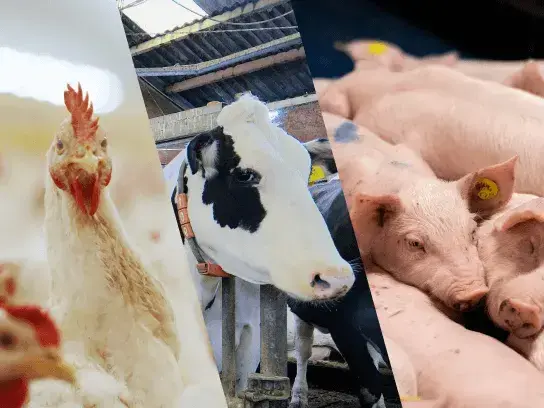Lighting plays a vital role in the agricultural sector, significantly impacting livestock well-being and productivity. One critical aspect of lighting design is Correlated Colour Temperature (CCT). In this blog, we will uncover five transformative ways CCT can enhance your lighting setup and explain why grasping this concept is vital for professionals in the industry.
What is Correlated Colour Temperature (CCT)?
Correlated Colour Temperature (CCT) measures the color appearance of a light source. It is expressed in degrees Kelvin (K) and indicates whether a light source appears more yellow/orange (warm) or blue (cool). The concept is rooted in the temperature of a theoretical black-body radiator that emits light of a similar hue to the light source in question.
How CCT is Measured
CCT is measured in Kelvin, with lower values representing warmer, more yellow-orange tones, and higher values representing cooler, bluer tones. For example:
- Warm light: 2700K to 3000K
- Neutral white light: 3500K to 4500K
- Cool white light: 5000K to 6000K

1. Enhancing Livestock Productivity
Light impacts various physiological processes, including hormone production. Light exposure influences the production of hormones such as melatonin, which regulates sleep and is produced in the dark. Proper light management helps in maintaining the balance of hormones, aiding in better sleep and activity patterns for the animals.
2. Improving Animal Welfare
Different CCT levels can enhance the welfare of livestock. Warm light (2700K-3000K) can create a calming environment, which is beneficial in areas where animals rest. This reduces stress and promotes better sleep patterns, leading to healthier and more content animals. Cool light can be used in active areas to keep animals alert and engaged.
3. Reducing Stress and Enhancing Comfort
Proper light management is crucial for reducing stress in animals. Consistent light cycles help maintain regular sleep and feeding patterns, which are essential for minimizing anxiety. Adequate lighting in housing areas helps animals navigate safely, reducing the risk of injuries and enhancing overall comfort. For instance, using warm light in resting areas can create a soothing environment, improving animal welfare.

4. Optimizing Light Exposure for Poultry
Poultry farms can significantly benefit from optimizing light exposure. Chickens require specific light cycles for optimal egg production. A consistent schedule of 14-16 hours of light per day can maximize egg laying. Adjusting light exposure to match the birds' natural cycles can improve health and productivity.
5. Enhancing Dairy Farm Efficiency
In dairy farms, extended light periods can boost milk production. Research shows that dairy cows exposed to 16-18 hours of light per day produce more milk. Cool white light can enhance milk production by mimicking natural daylight, keeping cows active and feeding more, which in turn boosts milk yield.
Practical Tips for Managing Light Exposure
Effective light management is essential for optimizing your lighting experience in agricultural settings. Here are some practical tips:
Maintain Consistent Schedules
Keep light schedules consistent to avoid disrupting biological rhythms. Gradually adjust light cycles if necessary to minimize stress.
Adjust for Seasonal Changes
During shorter winter days, extend artificial light exposure to maintain consistent cycles. In summer, reduce artificial light to match longer daylight hours.
Monitor Light Intensity
Ensure the intensity of light is appropriate. Both too much and too little light can be harmful. Use timers and dimmers to control light levels and ensure optimal exposure.
Conclusion
Understanding Correlated Colour Temperature (CCT) is crucial for making informed decisions about lighting in agricultural settings. Whether you aim to enhance livestock productivity, improve animal welfare, or optimize dairy farm efficiency, choosing the right CCT can significantly impact the effectiveness and comfort of your lighting. By understanding and applying the principles of CCT, you can transform your operations and improve the quality of life for your animals. Explore the possibilities of CCT and see how the right lighting can make all the difference.
Stay informed
Lighting matters. That's why we share our knowledge with the world through HATO Insights.
Cattle
More Milk, Less Effort: How RUDAX Boosts Dairy Production by Up to 14%!
Milk production isn’t just about nutrition, genetics, or farm management - lighting is the missing piece that’s often overlooked. At HATO, we’ve spent decades...
Cattle
Research: Naturally Improve Cow Milk Production by up to 7% with Lighting
For dairy cattle farm managers, increasing milk production is essential for the success of their farm. While management practices such as proper nutrition and...
Since 1974, we've been working on the best lighting solutions for the agricultural sector.
Improving life through brightness
HATO Insights
Find out how switching to good LED lighting improves performance and reduces costs.
Learn how color lighting affects different poultry species and improves their performance

.webp)
.webp)